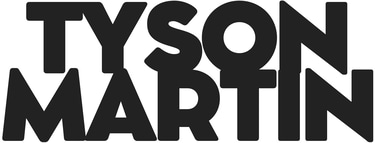Designing a DevSecOps Culture in a Fast-Moving Digital Organization
Innovation doesn’t wait for sign-off. And in today’s fast-moving digital organizations, security can no longer afford to stand in the way of speed. That’s why DevSecOps has become more than just a buzzword — it's a cultural necessity.


Designing a DevSecOps Culture in a Fast-Moving Digital Organization
Innovation doesn’t wait for sign-off. And in today’s fast-moving digital organizations, security can no longer afford to stand in the way of speed. That’s why DevSecOps has become more than just a buzzword — it's a cultural necessity.
A DevSecOps culture embeds security into the DNA of how products are designed, developed, and deployed. It's not just about tools or pipelines — it’s about mindset, accountability, and shared ownership across security, engineering, and product teams.
This post explores the key strategies for designing and sustaining a DevSecOps culture that accelerates innovation instead of slowing it down.
Why Culture Beats Tooling
You can’t automate your way into a DevSecOps culture. Tools are important, but what truly moves the needle is behavior: how teams think about risk, how they prioritize secure development, and how they collaborate under pressure.
Culture is what enables teams to:
Identify risks without fear of blame
Share responsibility for security outcomes
Balance protection with progress
Without cultural alignment, even the most advanced CI/CD pipeline will fall short.
Start with Shared Principles
Every DevSecOps initiative should begin with clear principles that guide decision-making. These aren’t rules or policies — they’re beliefs that shape behavior.
Some examples:
Security is everyone’s job: Not just the security team's.
Break things early, fix them fast: Embrace failure and learning.
Speed and safety can coexist: One doesn't have to come at the expense of the other.
Transparency builds trust: Between developers, security, and product leaders.
Make these principles visible. Talk about them in sprint planning. Reinforce them in retros. Celebrate when teams live them out.
Integrate Security from Day Zero
DevSecOps isn’t about adding steps — it’s about integrating security into the existing flow of development.
Here’s how:
1. Threat Modeling at the Ideation Stage
Before a single line of code is written, gather engineers, security leads, and product managers to map out potential risks. Make this part of your sprint zero or architecture review.
2. Security Requirements in User Stories
Ensure security considerations are baked into backlog grooming. For example, stories like "As a user, I want to receive a password reset link that expires in 15 minutes."
3. Automated Scanning in the CI/CD Pipeline
Integrate tools that check code for known vulnerabilities (SAST), scan dependencies (SCA), and validate configurations before code is merged.
4. Secure Defaults and Templates
Provide pre-approved libraries, infrastructure templates, and SDKs that follow security best practices, so developers don’t have to reinvent the wheel.
Upskill and Empower Developers
One of the most powerful levers in DevSecOps is education. Not every developer needs to be a security expert, but every developer should understand:
The security implications of their code
The basics of secure design
How to use security tools built into the workflow
Host regular security workshops, create just-in-time learning modules, and appoint "security champions" inside dev teams who can act as liaisons to security.
Make Security Feedback Immediate and Actionable
Security shouldn’t slow developers down. It should support them in shipping safely and confidently.
To do that:
Integrate scanning tools directly into the IDE or pull request process
Provide clear, prioritized results (e.g., fix these three critical issues now; defer these low risks)
Avoid vague messages like "risk detected"—instead, say "this dependency is known to be vulnerable to X, here’s a patch"
Fast feedback means faster fixes.
Measure What Matters
If you want to sustain a DevSecOps culture, you need to track the right metrics. Go beyond "number of vulnerabilities" and focus on outcomes:
Key metrics might include:
Mean Time to Remediate (MTTR) for critical issues
Percentage of code covered by automated security tests
Security issues caught pre-production vs. post-release
Developer satisfaction with security tooling
Share these metrics openly. Use them to drive improvement, not blame.
Align Security and Product Leadership
In high-velocity environments, security leaders must act as business partners, not blockers. That means:
Joining product planning discussions
Understanding market deadlines and customer expectations
Helping teams prioritize risk based on real impact
Security should never be the department of “no.” It should be the team that helps the organization say “yes, confidently.”
Normalize Incident Response Drills
DevSecOps isn’t just about prevention—it’s about resilience. Build muscle memory through regular simulations and table-top exercises that involve devs, product, and security together.
When incidents do happen, teams with a shared culture respond faster, communicate better, and learn more.
Final Thoughts: Culture Is the Control That Scales
In fast-moving digital organizations, no single tool or policy can keep pace with the speed of change. But culture can.
By embedding security thinking into the heart of product and engineering, DevSecOps becomes more than a framework. It becomes a mindset. A way of working. A signal to the organization that innovation and integrity go hand in hand.
And when that culture takes root, security doesn’t slow you down. It propels you forward.
About the Author
Tyson Martin is a cybersecurity and technology executive who helps global organizations build secure, resilient, and high-performing cultures. He writes about digital trust, leadership, and enabling secure innovation at scale.
